The lower temperatures and less light of November trigger deciduous trees to enter dormancy this month. As they begin their slumber for the colder months, the window for pruning them opens to the gardener. If you want to get ahead this month, here are seven trees to prune in November.
You have from now until early spring to give deciduous trees a potentially much-needed trim, and pruning on a bright day in late fall can often be more enjoyable than on a cold one in late winter. Starting early in the window also has its benefits if you have many trees and shrubs that need pruning before the end of winter. It can be satisfying to get some things ticked off on a nice day, as opposed to rushing at the back end of the window, desperately trying to get everything done.
You may like

(Image credit: Jacky Hobbs/Future)
7 trees to prune in November – why it’s important to check before you cut
While many trees will benefit from some attention this month, not all will. You can risk the health of some trees by pruning, or badly affect the display of spring bloom for others.
There are some trees (for example, birch and walnuts) that will bleed sap and be susceptible to pests and diseases. There are others (for example, magnolias and flowering dogwoods), where you risk removing the buds that will carry next spring’s blooms.
And finally, stone fruit trees are not pruned during dormancy like other fruit trees. It is a fruit tree pruning mistake to trim them in dormancy, as they’ll be left at risk of diseases like silver leaf and bacterial canker.
Always check before doing any trimming to ensure you are not making a tree pruning mistake by trimming this month. However, all of the following are certainly trees to prune in November, and they will appreciate any TLC you give them over the coming weeks.
1. Apple

(Image credit: Future)
Let’s start with only of the most popular and widely grown fruit trees, apples.
Pruning is important for apples as most trees fruit on spurs, so any annual pruning promotes the growth of more buds to carry fruit. The trimming also controls the size and shape of the tree, ensuring the branches can support the weight of the fruits. Finally, it allows for air circulation and light penetration among the canopy, which keeps the tree healthy overall.
The window to prune an apple tree starts in November and runs until late winter or early spring. You want to remove any dead, damaged, or diseased branches, along with any that are crossing or growing inwards towards the central trunk of the tree. You ideally want an open goblet shape of well-spaced branches.
To promote lots of branching and the growth of fruiting spurs, trim last year’s growth by a third, cutting to an outward-facing bud. You can do this with a pair of sharp pruning shears.
I personally have a trusty pair of Felco 2 pruning shears that I have used to prune many fruit trees over my years as a professional gardener – and you can get new Felco F2 pruning shears on Amazon that can last for decades, as every part is replaceable.
When pruning espalier apple trees, winter pruning involves removing dead, diseased, and damaged branches, as well as any necessary trimming to maintain the trained tree’s shape or thin congested spurs.
2. Pear
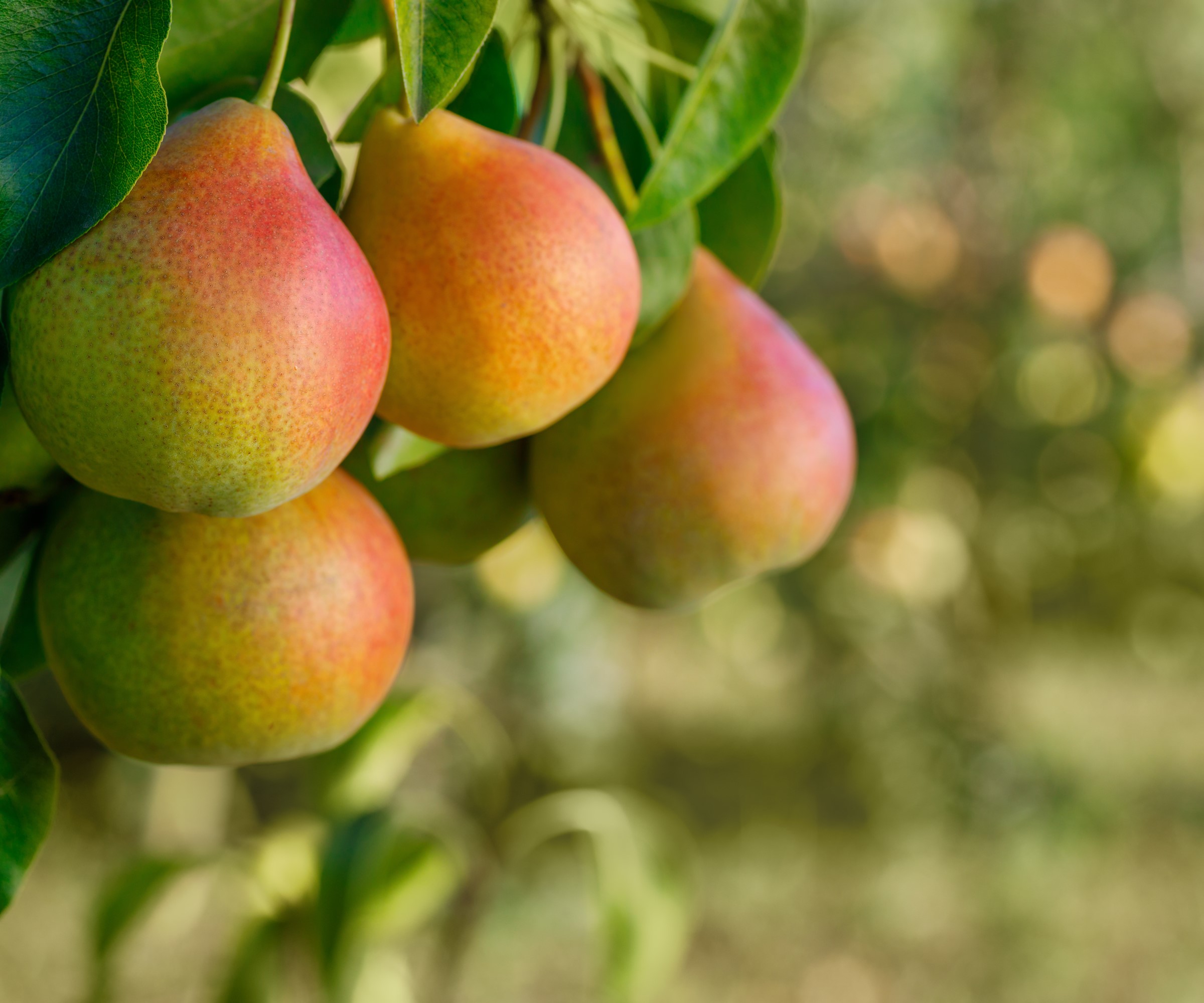
(Image credit: Getty/Alter_photo)
Pear trees are another of those ubiquitous fruit trees; millions of gardeners globally love them as the fruits from homegrown trees surpass any you get in stores. I have maintained free-standing and trained pear trees in kitchen gardens, and winter pruning maintains their shape and, like apples, promotes the formation of spurs to carry fruit.
Prune pear trees when they are dormant, but resist the urge to trim early, as it can stimulate new growth, which is damaged by frosts and leave the entire tree susceptible to pests and diseases.
Annual pruning always starts with removing dead, diseased or damaged branches. Next, look to thin the tree by removing crossing, weak, or unwanted branches to improve air and light circulation.
Again, aim for a goblet or vase shape, which can be slightly trickier with pears, as their branches grow more upright than apple trees. Trimming back each main branch by a third can promote spurs and reduce the length of branches to support the weight of the fruit. This is also helpful as pear wood is softer than apple wood.
Loppers are the best pruning tools for thicker branches; they are suitable for ones 1-2 inches thick, compared to one inch for pruning shears. A pair of extendable loppers like these at Amazon can also reach higher up into the tree to cut branches up to two inches thick.
3. Quince
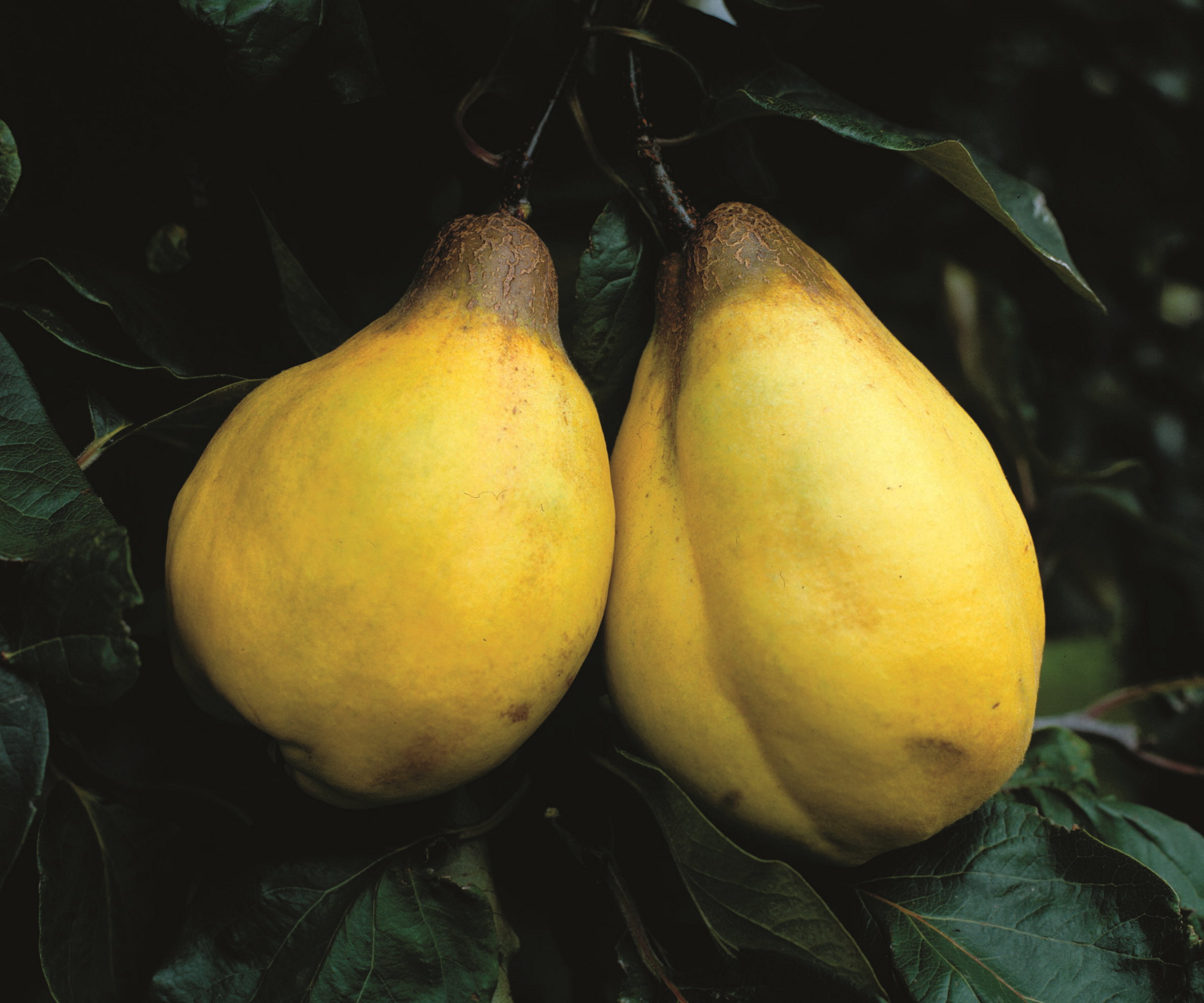
(Image credit: Future)
Quinces were once very popular trees in colonial gardens, but they fell out of fashion. That is now changing, and growing quince trees is experiencing a bit of a resurgence. A good selling point for them is that they are easy fruit trees to grow, including not requiring lots of regular pruning.
You do need to prune quince trees annually when they are young, to give them a good framework of branches and an open goblet shape.
Established trees then mainly just need dead, diseased, or damaged branches removed, and weak, congested, or crossing branches trimmed out to open up the canopy and let more air and light in.
As quince trees fruit on tips at the end of their branches, any branches that get too long are best shortened, as the weight of the heavy fruits can cause them to snap. It is also advisable to remove suckers from around the base of the tree whenever you see them.
Quince trees can reach up to 20 feet tall, so you may need an extendable tree pruner to cut higher branches. This 2-in-1 extendable tree pruner at Amazon has a pruning blade and a pole saw head for trimming branches of different sizes.
4. Mulberry

(Image credit: Alamy / Natalia Kokhanova)
Mulberries are unique fruits to grow, with rich, tart, and juicy fruits resembling large, elongated blackberries that are rarely sold in shops. When growing mulberry trees, pruning is a task that must always be done gently.
That forgiving touch is essential as mulberry trees struggle to heal large wounds. It means you want to make as few cuts as possible and never want to prune branches over two inches in diameter, as it can leave the tree prone to fungal or bacterial diseases, as the open wounds take a long time to mend.
When you prune a mulberry tree, remove dead, diseased, damaged, and crossing branches to open up the canopy. And make a few small-scale trims to thin the tree, but never remove more than a quarter of the tree at one time. Over-pruning mulberries does affect fruiting, as well as leaving the tree vulnerable to diseases and pests.
For any pruning, ensure your tools are clean and sharp. A pocket-sized sharpening tool, like this one at Amazon, can be used on straight blade tools, including pruning shears, loppers, and hedging shears.
5. Beech
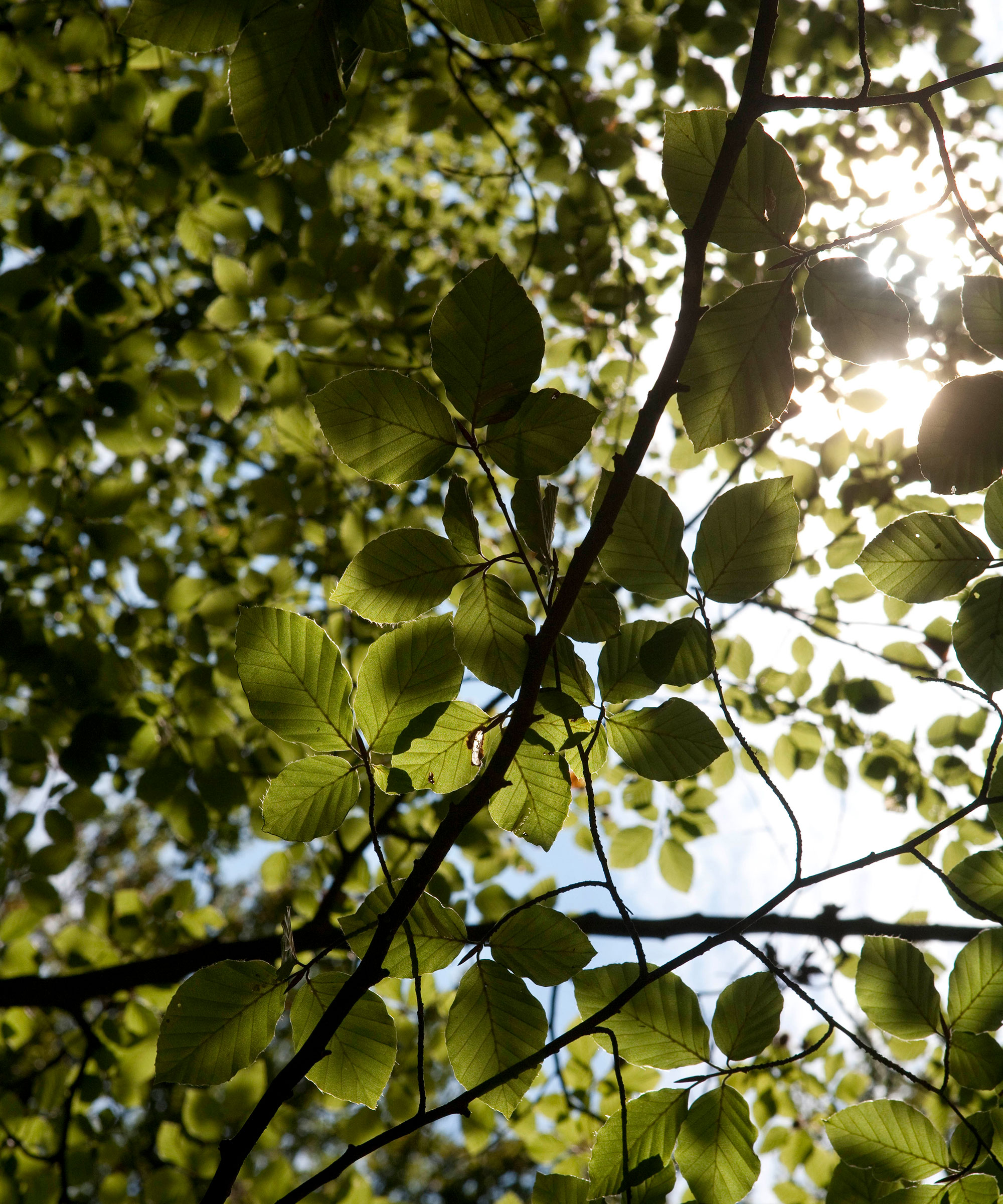
(Image credit: Future)
Beech trees are historic British trees. Many people use beech as a hedging plant, but they make beautiful trees for any landscape, thanks to their stately shape, dense foliage, and dazzling fall color.
They can reach 90-130 feet when left to their own devices. This is where regular pruning is helpful, to maintain the ideal size, keep it manageable for any yard, and ensure the tree remains healthy and beautiful for decades to come.
Beech trees do bleed sap when they are actively growing, so pruning always takes place during dormancy. As with all others on this list, remove any dead, diseased, or damaged wood, along with any growing too close to the ground or going inwards towards the trunk.
If the tree has grown too tall, use crown reduction to bring down the height over the course of a few years. Never top the tree, which is removing the central stem and main canopy branches in one go. Not only does a topped tree look ugly, but it also places huge stress on it, and can affect its future growth.
6. Hazelnuts

(Image credit: Getty Images/Mint Images RF)
Varieties of hazelnuts, which are also known as cobnuts and filberts, should be regularly pruned in dormancy to promote wood to carry the crop of nuts. Some of the most common varieties include the American hazelnut (Corylus americana), the European hazelnut (Corylus avellana), and the large filbert (Corylus maxima).
The trees are ideally grown as multi-stemmed trees, which helps boost pollination and gives the best crop. Such a form should have between five and ten well-spaced, strong stems, with the structure formed over the first five years of the tree’s life. Once the main stems reach 7-8 feet, cut them back to a bud to encourage sideshoots.
Established hazelnuts require removing suckers and opening up the tree to combat potential congestion. Make thinning cuts to remove dead, damaged, and diseased branches, weak shoots, inward-growing stems, or overcrowded areas. This thinning allows more light into the tree.
You can remove a few older, upright stems to reduce congestion. However, when trimming, remember the one-third pruning rule, to only trim out up to a third of the growth at any given time.
Larger, older stems may require the use of a pruning saw, which is used for branches beyond the thickness of pruning shears or loppers. For example, this Fiskars folding hand saw at Walmart has a 10-inch blade with razor-sharp, triple-ground teeth for cutting through thick branches.
7. Davidia
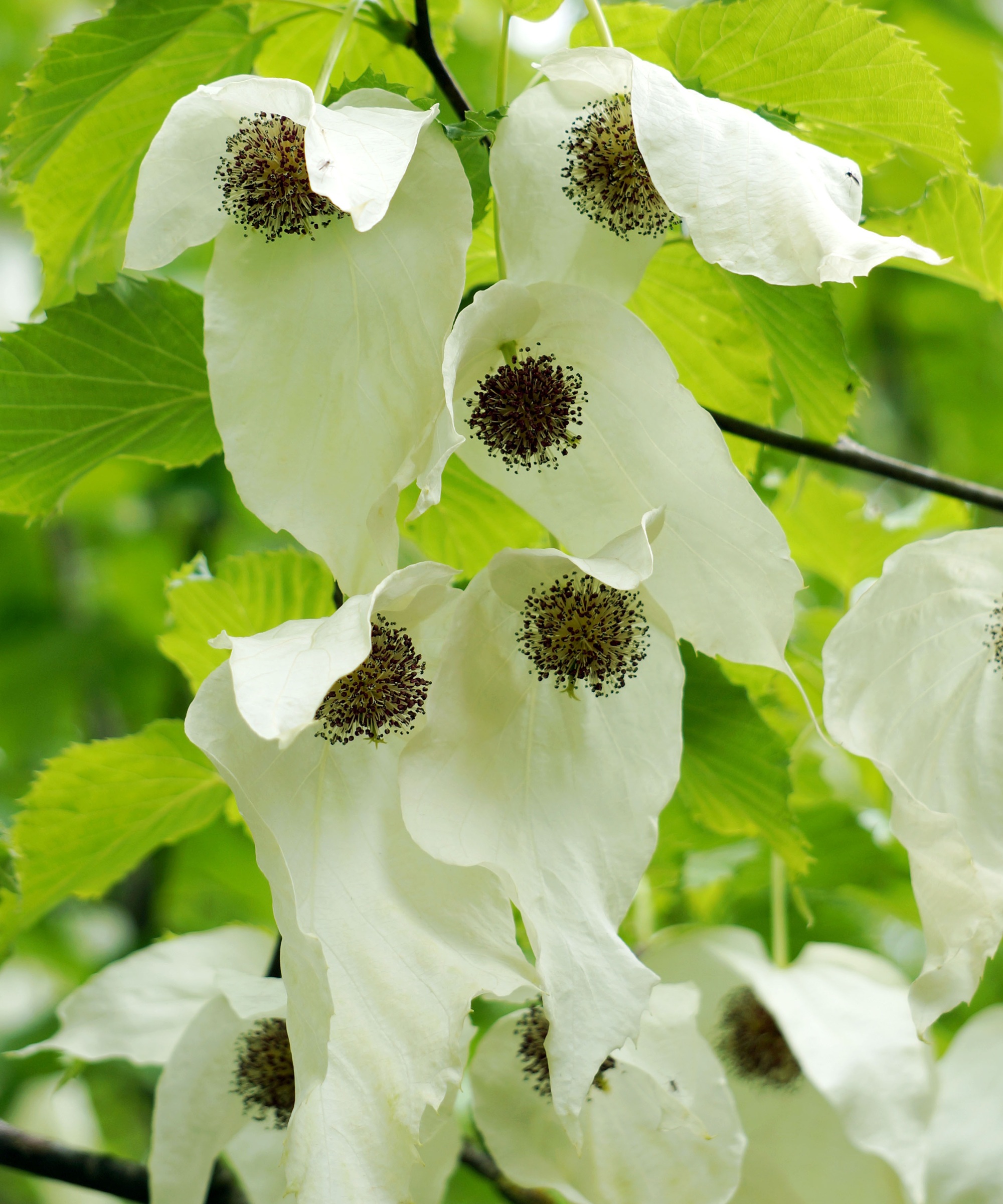
(Image credit: Alamy/ Gabriele Maerz)
The handkerchief tree (Davidia involucrata) is native to China and a stunning, under-rated tree. It gets its name from the glorious white bracts which surround the flowers in spring, as they flutter in the wind like handkerchiefs hanging from the branches.
A handkerchief tree can take 10 years to start flowering after planting. They may be a luxury, but they are very low-maintenance trees. They do not respond well to heavy pruning, so always treat a handkerchief tree with a gentle touch. The risk of over-pruning is that the tree gets stressed, which likely results in fewer flowers.
Formative pruning is required to train a single-stemmed tree, as there is a risk of the tree splitting if there is more than one leading shoot. Once established, focus primarily on removing the usual suspects of dead, damaged, or diseased branches, along with any that are crossing or rubbing.
If you are looking for more jobs to add to your fall gardening checklist this month, it is worth remembering that November can be an ideal time to take plant cuttings. This rewarding task gives you free shrubs or perennial plants for your garden. If you are interested in finding out more, this guide to plants to propagate in November highlights seven plants you can take cuttings from, along with expert tips for each.
Shop pruning supplies

This pruning set features a bypass-style lopper, hedge trimmer, and bypass pruner to fill all your pruning needs.
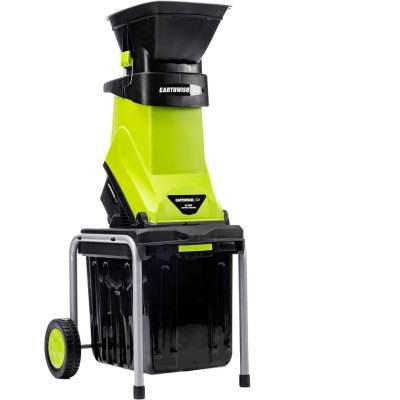
This chipper can process branches and sticks up to 1.75 inches thick and has wheels so you can move the machine around the garden.

Keep your hands protected while pruning with these 100% faux suede puncture-resistant and scratch-resistant garden gloves.
TOPICS
Fall Gardening
Pruning

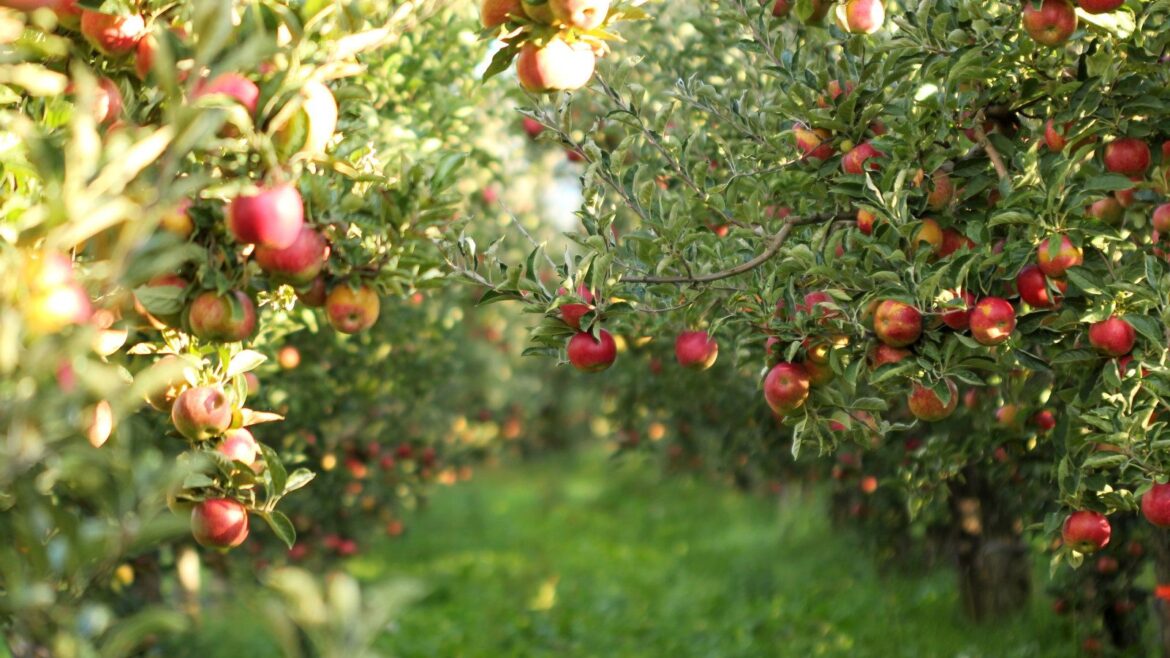
Comments are closed.